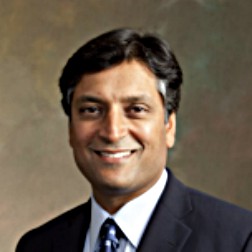This past May marked the five-year anniversary of Facebook going public, a seminal event that cemented the influence of social media on our lives.
At the risk of heaping too many additional encomiums on the bright people that brought us these networks, its not hyperbole to note that the advent of social media has changed the way we interact. People can now very easily reconnect with grade-school friends, quickly share photos of loved ones, and be introduced to new people through mutual friends or shared interests. At the same time, everyone has the option to control their levels of privacy. You can view and share only those things that suit your needs.
The future of trading technology is going in the same direction. Each trader will sit at the center of their own universe controlling what trades they make available to whom. And the best market to demonstrate this new paradigm is the currency market.

FX is the worlds largest financial marketplace at $5 trillion and growing. It is a very complex market that thrives on prescient reactions to geopolitical events and a refined understanding of finance and technology. Its not a market that can be summarized in the space of one article, but for the purposes of this piece Im going to try and keep things very simple.
First, why is currency trading so popular? The reasons have less to do with currency as an asset class than the market structures that govern its exchange. Simply put, the FX market is unlike any other asset market. The sheer size of the global FX market means it is also the most liquid. And it is also geographically dispersed in a way that no other market can claim. That means nearly continuous trading activity across every world time zone. Thus it has emerged as a hotspot among investors chasing alpha by diversifying into multi-asset trading strategies.
These developments have created the perfect storm of opportunity for new investors eyeing the FX market. At the same time, cost effectiveness is at a new premium for existing FX players and all are searching for the right platform that is going to give them the most for their money.
And regardless of whether the trading entity is a bank, pure FX player or any kind of financial institution or market player, all of them have three basic questions when it comes to looking at what technology they will use: Can I access the greatest liquidity? Can I customize it to my needs? Do I have access to a variety of smart trading strategies that uses this liquidity?
Anybody whos trading in FX markets will have to find elegant technology solutions to those problems. The way forward for FX traders new and old is modern FX exchange that enables lo-cost customization, which is best accomplished with SaaS platform. This isnt something new, but new versions are coming online all the time. And it takes the paradigm that works so well among human beings and optimizes it for currency trading.
Why shouldnt trading currencies be as easy and self-customized as the social media experience? It can be with the adoption of a SaaS platform to create a modern FX exchange.
A modern SaaS platform allows traders to pick and choose, either by name or by anonymous identifier, exactly whom they want to see or who they want to be seen by. Thats the customization that is not available in a central limit order book, and its not available in generic pool-based venues that are available. Its a fundamentally unique quality that is built into the way this kind of system works. Traders are always in control of their own destiny in terms of how they are interfacing with all other market participants. They are essentially building their own virtual exchange. This enables a social network effect that puts traders in the center of their own cultivated universe.
This modern FX exchange is essentially the Facebook of trading. Users can tailor the rules that govern their information in accordance to their needs. Not everyone will be able to see or share data that the user does not wish to be seen. And the privacy protections that the modern exchange offers are matched by the benefits of an expanding network. In its early days, Facebook circulated a particular graphic it called the Social Graph that demonstrated the expanding universe that came with each additional friend connection on its network. If 10 users had no friendships among them, the Social Graph was zero, but once people began to friend one another and their mutual friends began to connect, suddenly the connectedness of each user was much higher.
What makes the SaaS-based platform of a modern FX exchange so powerful is the number of bilateral relationships that a user can source in this same way. If you compare the grid of FX trading over open exchanges and compare it to the Social Graph of Facebook, youll see they exhibit the same kind of multiplier effect. This gets to the core of what the FX market is: its tens of thousands of bilateral relationships that make sense for all participants rather than some kind of exclusive club sitting or a market dominated by one large participant. The focus of the market is instead on this connected eco-system of everyone trading with everyone else.
The FX market is at an exciting stage where both new entrants and existing players looking to find the most cost-effective way forward. Regardless of size or scale, very trader should be able to cultivate their own FX universe. Its time that currency exchanges caught up with Facebook and let FX traders chart their own path. A SaaS-based platform supporting a modern exchange is the best way forward.
Harpal Sandhu is the CEO of Integral.




